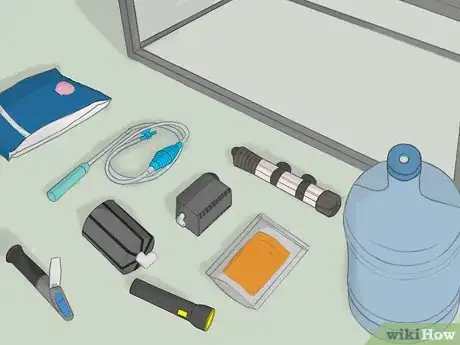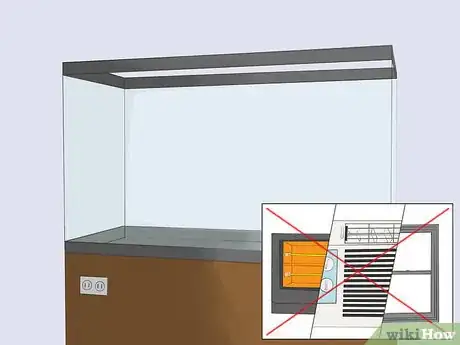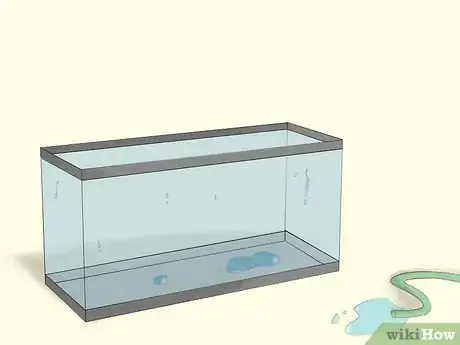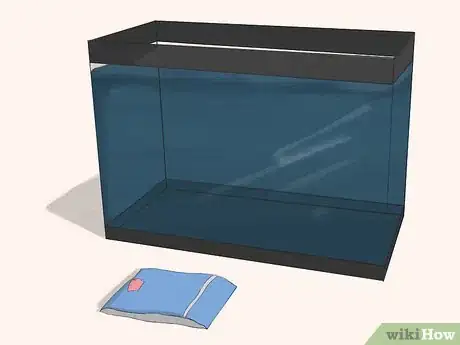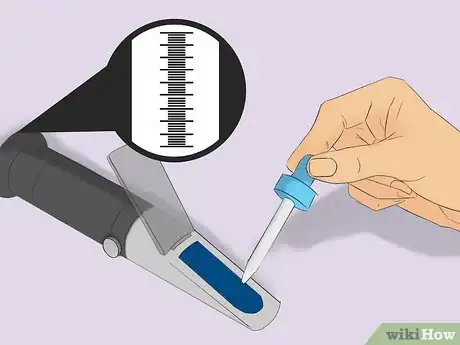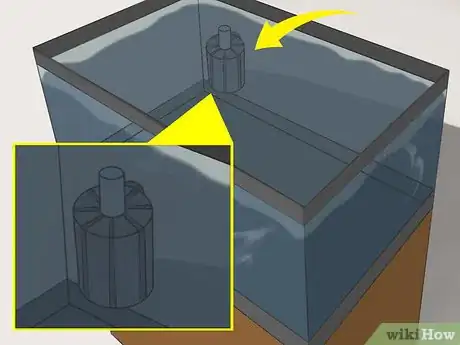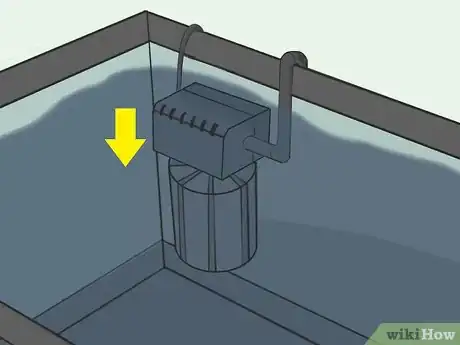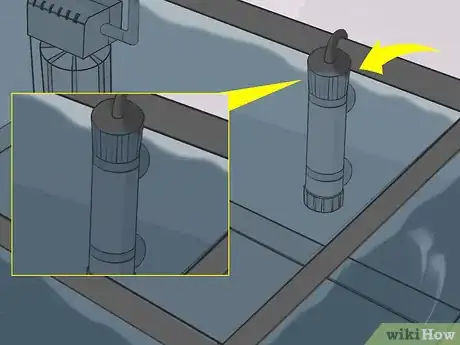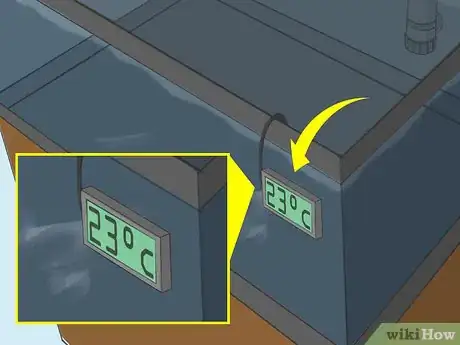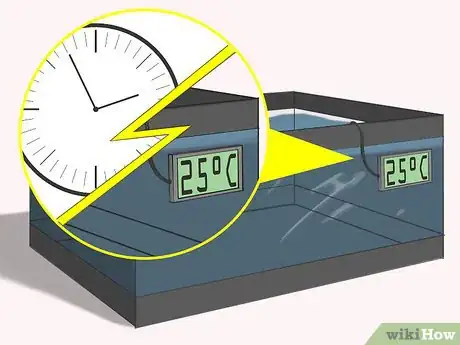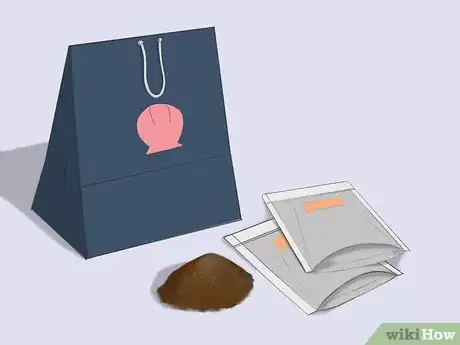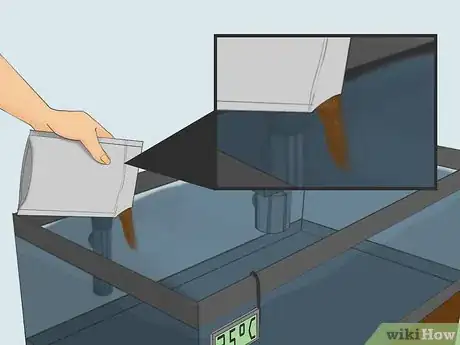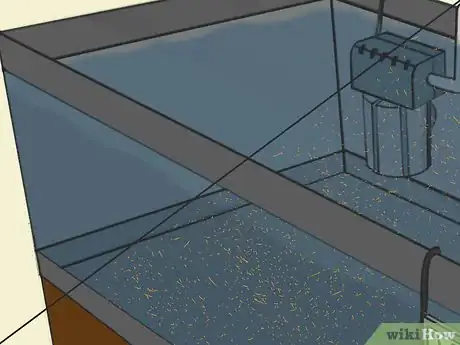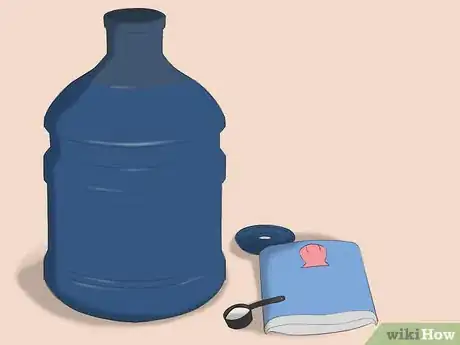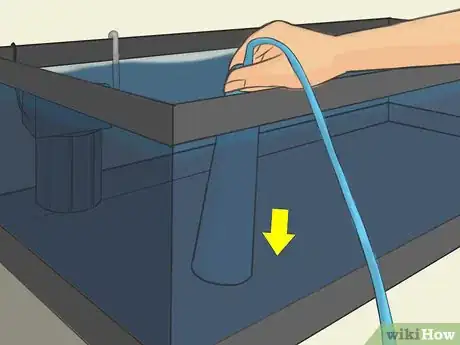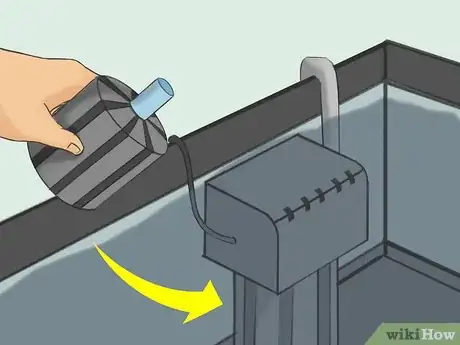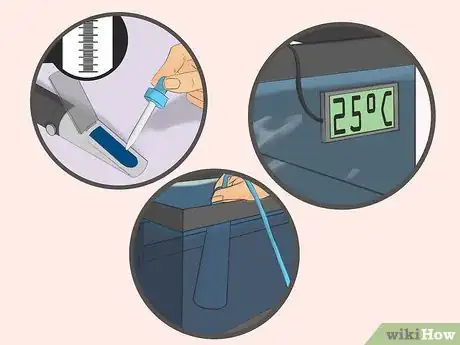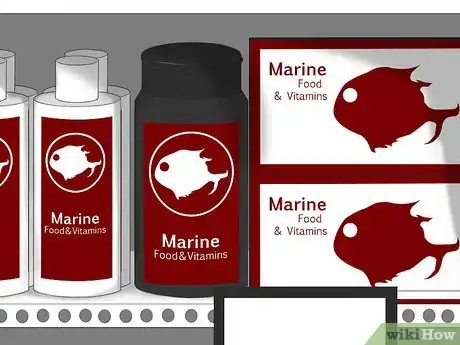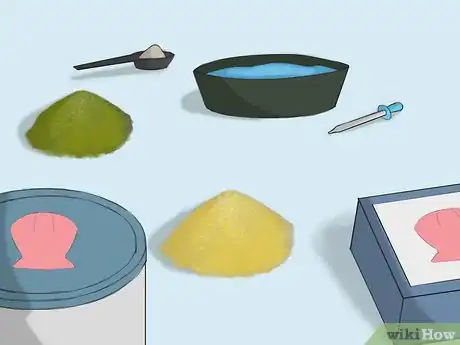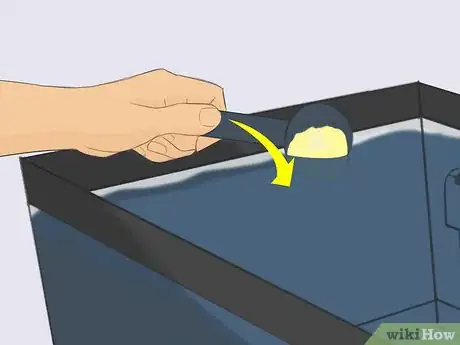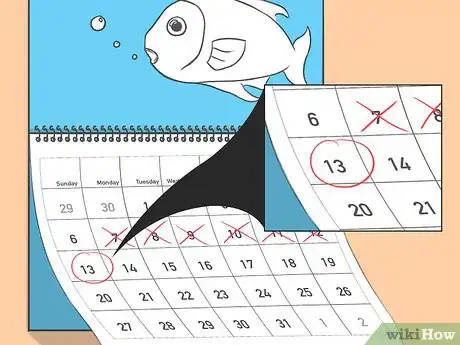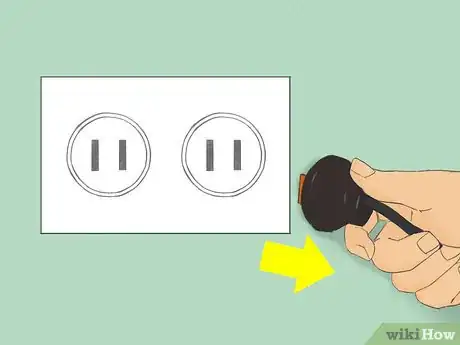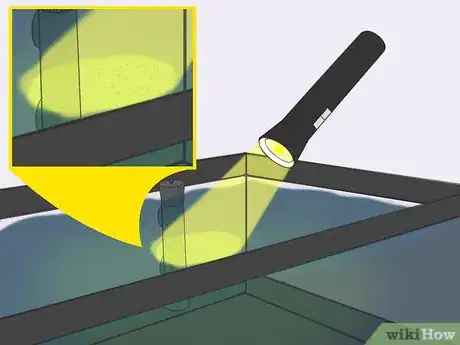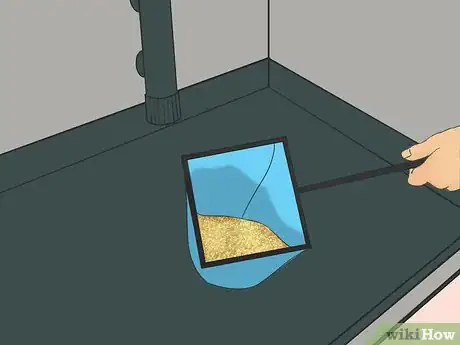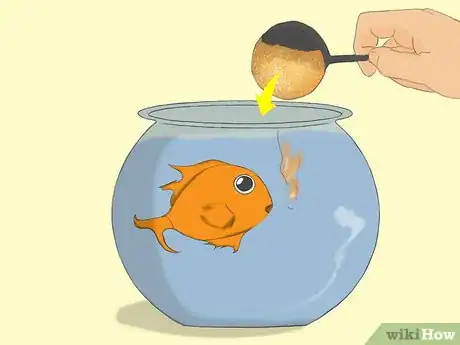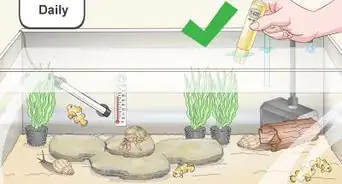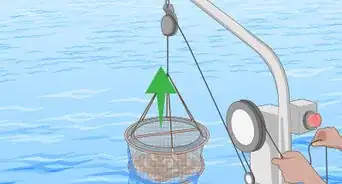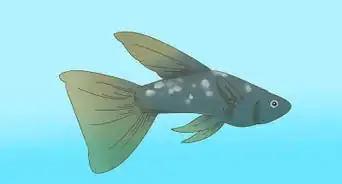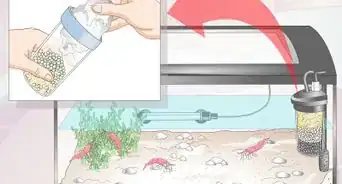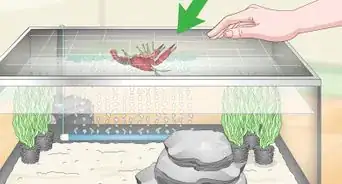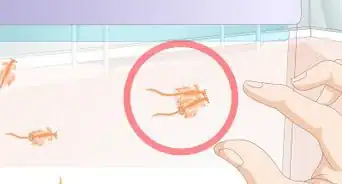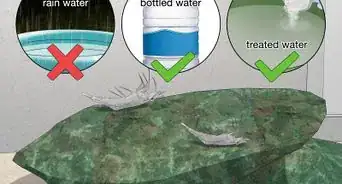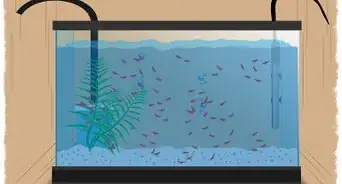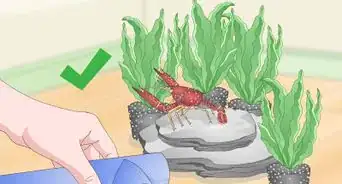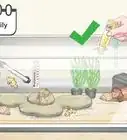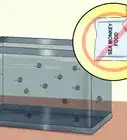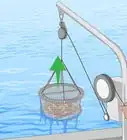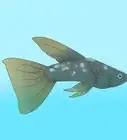This article was co-authored by Doug Ludemann. Doug Ludemann is the owner and operator of Fish Geeks, LLC, an aquarium services company based in Minneapolis, Minnesota. Doug has worked in the aquarium and fish-care industry for over 20 years, including having worked as a professional aquarist for the Minnesota Zoo and Shedd Aquarium in Chicago. He received his Bachelor of Science in Ecology, Evolution, and Behavior from the University of Minnesota.
wikiHow marks an article as reader-approved once it receives enough positive feedback. This article has 12 testimonials from our readers, earning it our reader-approved status.
This article has been viewed 715,052 times.
Brine shrimp are a nutritious and easy to raise feed for tropical and marine life. Although there are plenty of artificial dietary options, brine shrimp provide important lipids, vitamins, and amino acids many fish need.[1] Brine shrimp are also a fun creature for children to raise. Brine shrimp, especially in their adult stages, can be bought in most pet stores, but it is sometimes more convenient to raise them at home. Raising them will be easier if you have experience with maintaining a saltwater tank system, but this article will detail the essentials of raising brine shrimp, so you will know how to begin raising them and how to maintain the tank.
Steps
Setting Up a Brine Shrimp Tank
-
1Go shopping. All of the supplies necessary will be found at an aquarium or pet store; you can shop online if that is more convenient. You will need many supplies for your brine shrimp tank, including:
- 10 gallon tank
- Sponge filter (that comes with a tube, a sponge, and a hookup for the air pump)
- Air pump
- Tank heater and thermometer
- A package of brine shrimp cysts (eggs)
- Aquarium salt mix (setting up a brand new aquarium means you will need about 13 pounds of salt per 50 gallons)
- 1 gallon container with a lid
- 10 gallons reverse osmosis water
- Refractometer or hydrometer for measuring salinity
- Gravel vacuum
- Flashlight
-
2Determine the best location for the tank. Saltwater tanks should not be near any windows, doors, heater vents, direct sunlight, or air conditioners so the temperature of the water does not change rapidly. The tank should also be set up near electrical outlets because you will need to plug in the heater and air pump.
- Leave room between the tank and the wall so the air pump will easily fit.
- The surface should also be level.
Advertisement -
3Rinse the tank to remove any dust. Dry the outside of the tank once you are done, and then place the tank where it belongs in your home.
-
4Fill the tank with a saltwater mixture. Make a saltwater mixture with aquarium salt and reverse osmosis filtered water.[2] Fill the 10 gallon tank with 9 gallons of water so there is room for the salt. Then, add the salt per manufacturer’s instructions.
- The salt container will have specific instructions for calculating the amount of salt necessary for your tank.
- Don’t worry if you add too much or too little salt; you can adjust the levels before adding the brine shrimp cysts.
-
5Track the salinity with a refractometer or a hydrometer. The salinity of the tank should always be 30-35 ppt (parts per thousand).[3] Use the instructions for your refractometer or hydrometer to measure the salinity of the tank, and add more salt or more reverse osmosis water accordingly.
- Operating the refractometer or hydrometer involves placing some of the water inside via a dropper or other apparatus.
- Test the water until you reach the correct salinity.
- If you’ve mixed the saltwater correctly according to the manufacturer’s instructions, you will not have to tinker with the mixture.
-
6Set up a slow air-powered sponge filter. This is the best filter to use in the tank because it will provide aeration, filter the tank water, and won’t suck up the tiny brine shrimp. The filter should include a tube, a sponge, and a hookup for the air pump; if it does not include the hookup for the pump, buy this separately.
- You can place the sponge filter on the bottom of the tank or mount it to the side of the tank, depending on the model you purchased.
- There are many cheap filters on the market nowadays, but do not scrimp on filtering equipment.
- Faulty filters may cause the brine shrimp to die.[4]
-
7Attach the air pump to the sponge filter. Using airline tubing, attach the end of the sponge filter to the end of the air pump. Plug the pump in, and the filter will begin working. Keep the filter on a sturdy surface behind or below the tank.
-
8Install the heater. Set up the heater according to the manufacturer’s instructions. Once you plug it in, you can begin to control the temperature of the tank.
-
9Install the thermometer using manufacturer’s directions. Place the thermometer on the opposite end of the heater so it is easily visible. Once both the heater and thermometer are installed, you can adjust the heater so the tank is always at the correct temperature: 68°F (20°C)-79°F (25°C). Turn it up or down accordingly.
-
10Keep the tank between 68°F (20°C)-79°F (25°C) for 24 hours. Once the tank has maintained this temperature for 24 hours, it is stable enough to hold the brine shrimp. Check the temperature at least twice a day—if the heater is accidentally unplugged or the temperature drastically changes for any reason, your brine shrimp could die.
Hatching Brine Shrimp
-
1Buy brine shrimp eggs. Packets of dehydrated brine shrimp cysts are sold at aquarium and pet stores.[5] Beginning with one packet is fine, since the brine shrimp will multiply rapidly.
-
2Place the cysts in the water, and they will hatch after 15 to 20 hours.[6] If your tank is the correct temperature and salinity for the shrimp, they will hatch within a day. 12 hours after that, you will have young shrimp swimming around in the tank.
-
3Enjoy watching the brine shrimp population grow. Brine shrimp will multiply quickly. They will begin as tiny cysts and end up as small shrimp. You do not need to aid them in hatching or growing, since they will do so naturally in a well-maintained tank.
- If your brine shrimp are not growing or hatching, check the salinity and temperature of the tank for problems.
- It is natural for some of the brine shrimp to die.
Maintaining a Suitable Habitat
-
1Make a reserve of saltwater.[7] You will need to keep the saltwater on hand for when you change the tank water. Always having a gallon of saltwater ready will make changing the water much easier.
- Fill a gallon container with reverse osmosis water.
- Add the salt per manufacturer’s instructions.
- Cap the container, and store the saltwater in a cool, dry area until you need it.
-
2Use a gravel vacuum to change the water in the hatchery regularly, about 20% (2 gallons) per week.[8] Turn off the aeration and circulation system before changing the water. Let the air in the tank settle so it is not moving. Shine a bright light at the surface of the tank so the brine shrimp all flock to it.
- Siphon the dirty water off the bottom of the tank with the gravel vacuum.
- Then, replace the siphoned water with some of the marine salt mixture you made earlier.
- Check the salinity and temperature of the tank to make sure the levels are good.
-
3Rinse or replace the sponge filter every 1-4 weeks.[9] The sponge filter may get noticeably dirty. To rinse or replace the filter, turn off the air pump, remove the sponge, and rinse it in the used tank water, or non-chlorinated (conditioned with Prime or other conditioner) room temperature-or current temperature of your aquarium water. When it is clean again, replace it, and turn the air pump back on. You will only need to get a brand new sponge if it disintegrates. It houses useful bacteria to keep the tank healthy. Never rinse the sponge or any other filter in anything other than used tank water or conditioned water. To rinse filter media in too hot, too cold or chlorinated water destroys the bacteria that supports a healthy tank.
- Use a flashlight to herd the brine shrimp away from the sponge filter when doing this.
- You may need someone to help you grab the filter or shine the light.
-
4Regularly check the tank’s temperature, salinity, and cleanliness. All of these factors are important to keep in mind when you are maintaining a saltwater habitat. Get into the habit of checking these factors weekly.
Feeding Brine Shrimp
-
1Use enrichment formulas. Selcon is a popular brand, and there are many others available at most aquarium stores. Ask an employee for help if you have trouble finding the formulas, or use an online store to buy the food in bulk.
-
2Feed the brine shrimp yeast, pureed greens, powdered eggs, or powdered milk. Brine shrimp are not picky, and they will eat these human foods. Spirulina is another option to feed the brine shrimp.
-
3Feed only small amounts, but do so several times a day. Do not overfeed the brine shrimp! If the tank water begins to look excessively murky and dirty with food, clean the tank and feed the brine shrimp smaller amounts.
Harvesting Brine Shrimp
-
1Begin harvesting the brine shrimp after 8 days. Of course, if you are raising brine shrimp purely for pleasure, you do not have to harvest them, but after 8 days, the adults are large enough to catch with a net and feed to other fish.
-
2Turn off the circulation system. After about 10 minutes, the empty cysts shells will float to the surface, and unhatched cysts will sink to the bottom.[10] Now, you can more easily catch the live brine shrimp.
-
3Shine a flashlight where you want them to herd. All of the brine shrimp will flock to the light, so they will be easy to catch with the fish net.
-
4Use a fish net to catch the adult brine shrimp. The smaller brine shrimp will fall through the net, but larger ones won’t. Catch the amount you wish to feed to your other fish.
-
5Feed the brine shrimp directly to other fish. Place them in the tank of the fish you want to feed. Your other fish will get to enjoy the nutritious brine shrimp.
Expert Q&A
Did you know you can get expert answers for this article?
Unlock expert answers by supporting wikiHow
-
QuestionHow can I get brine shrimp to hatch quickly?
 Doug LudemannDoug Ludemann is the owner and operator of Fish Geeks, LLC, an aquarium services company based in Minneapolis, Minnesota. Doug has worked in the aquarium and fish-care industry for over 20 years, including having worked as a professional aquarist for the Minnesota Zoo and Shedd Aquarium in Chicago. He received his Bachelor of Science in Ecology, Evolution, and Behavior from the University of Minnesota.
Doug LudemannDoug Ludemann is the owner and operator of Fish Geeks, LLC, an aquarium services company based in Minneapolis, Minnesota. Doug has worked in the aquarium and fish-care industry for over 20 years, including having worked as a professional aquarist for the Minnesota Zoo and Shedd Aquarium in Chicago. He received his Bachelor of Science in Ecology, Evolution, and Behavior from the University of Minnesota.
Professional Aquarist
-
QuestionHow do you care for live brine shrimp?
 Doug LudemannDoug Ludemann is the owner and operator of Fish Geeks, LLC, an aquarium services company based in Minneapolis, Minnesota. Doug has worked in the aquarium and fish-care industry for over 20 years, including having worked as a professional aquarist for the Minnesota Zoo and Shedd Aquarium in Chicago. He received his Bachelor of Science in Ecology, Evolution, and Behavior from the University of Minnesota.
Doug LudemannDoug Ludemann is the owner and operator of Fish Geeks, LLC, an aquarium services company based in Minneapolis, Minnesota. Doug has worked in the aquarium and fish-care industry for over 20 years, including having worked as a professional aquarist for the Minnesota Zoo and Shedd Aquarium in Chicago. He received his Bachelor of Science in Ecology, Evolution, and Behavior from the University of Minnesota.
Professional Aquarist Keep their salinity within the proper range. I think you can go with a variety of ranges. What works really well is you put a stopper at the bottom of 2 liter bottle. Then, put an aerator in there and stand it up. You don't even need a diffuser at the bottom. Fill it with water. Keep it a little warmer than room temperature, and feed them.
Keep their salinity within the proper range. I think you can go with a variety of ranges. What works really well is you put a stopper at the bottom of 2 liter bottle. Then, put an aerator in there and stand it up. You don't even need a diffuser at the bottom. Fill it with water. Keep it a little warmer than room temperature, and feed them. -
QuestionWhat do brine shrimp eat?
 Doug LudemannDoug Ludemann is the owner and operator of Fish Geeks, LLC, an aquarium services company based in Minneapolis, Minnesota. Doug has worked in the aquarium and fish-care industry for over 20 years, including having worked as a professional aquarist for the Minnesota Zoo and Shedd Aquarium in Chicago. He received his Bachelor of Science in Ecology, Evolution, and Behavior from the University of Minnesota.
Doug LudemannDoug Ludemann is the owner and operator of Fish Geeks, LLC, an aquarium services company based in Minneapolis, Minnesota. Doug has worked in the aquarium and fish-care industry for over 20 years, including having worked as a professional aquarist for the Minnesota Zoo and Shedd Aquarium in Chicago. He received his Bachelor of Science in Ecology, Evolution, and Behavior from the University of Minnesota.
Professional Aquarist
Warnings
- Be very careful when working with both water and electricity. Although air pumps are built to be used around water, they vary in quality and are not built to be submerged or doused in water.⧼thumbs_response⧽
Things You'll Need
- 10 gallon tank
- Sponge filter (that comes with a tube, a sponge, and a hookup for the air pump)
- Air pump
- Tank heater and thermometer
- A package of brine shrimp cysts (eggs)
- Aquarium salt mix (setting up a brand new aquarium means you will need about 13 pounds of salt per 50 gallons)
- 1 gallon container with a lid
- 10 gallons reverse osmosis water
- Refractometer or hydrometer for measuring salinity
- Gravel vacuum
- Flashlight
References
- ↑ http://www.brineshrimpdirect.com/c123/what-guidelines-culturing-brine-shrimp-c119.html
- ↑ http://www.brineshrimpdirect.com/c123/what-guidelines-culturing-brine-shrimp-c119.html
- ↑ http://www.aquaticcommunity.com/fishfood/growingadultbrineshrimp.php
- ↑ https://fishkeeper.co.uk/post/choosing-an-aquarium-filter
- ↑ http://www.petplace.com/article/fish/general/feeding-nutrition-of-fish/how-to-raise-brine-shrimp
- ↑ http://www.petplace.com/article/fish/general/feeding-nutrition-of-fish/how-to-raise-brine-shrimp
- ↑ http://www.brineshrimpdirect.com/c123/what-guidelines-culturing-brine-shrimp-c119.html
- ↑ http://www.petplace.com/article/fish/general/feeding-nutrition-of-fish/how-to-raise-brine-shrimp
- ↑ http://www.firsttankguide.net/sponge.php
About This Article
To raise brine shrimp, set up a saltwater tank with a slow air-powered sponge filter attached to the pump and a heater so you can monitor the water temperature. Next, buy a packet of dehydrated brine shrimp cysts and pour them into the tank's water. The eggs will hatch within 15 to 20 hours! Feed the baby shrimp small amounts of yeast or powdered milk every day, and you can start harvesting the shrimp in about 8 days! For tips on harvesting your brine shrimp, read on!
